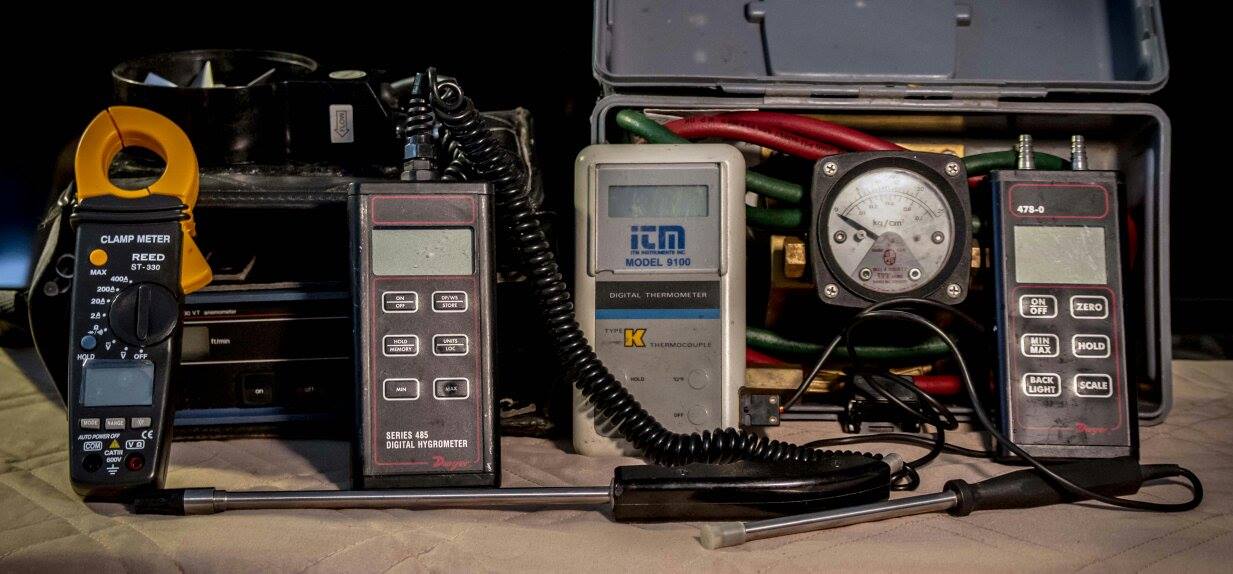ASHRAE 110 Scope of Work, ASHRAE 110 and Fumehoods,
Fumehood required tests

ASHRAE 110 Scope of Work speaks to ASHRAE 110 and fumehoods and fumehood required tests and the frequency of such tests.
Note: Fume Hood Certification is to be done on an annual basis.
For existing fume hoods there must be tracer gas verification every 5 years and if this has not been done it is suggested that a budget be included to do such as soon as possible. It is suggested that these tests can be phased in at 20% of fume hoods for each year over the next five years on an ongoing basis.
The ASHRAE 110 Scope of Work tracer gas tests are to prove sash movement containment tests and for VAV fume hoods VAV response and stability tests. For VAV systems the two tests can be done at the same time.
Preliminary Procedures ASHRAE 110 Scope of Work
Where access allows, using a smoke pencil, check the integrity of all seals around light and other fixtures.
Check that the sash stop is still in place and operates properly.
Check that all baffles are in the same positions as in previous tests.
Determine whether significant sized laboratory equipment inside the hood is the same as for previous tests.
ASHRAE 110 Considerations
Visually inspect the fan and motor, pulleys and belt. Is belt at correct tension? There should be approximately .5 “of play.
Are fan and motor pulleys in good shape? Are they worn or slipping?
Ask the service provider and user if belts and pulleys have been changed since last set of tests.
Inquire as to what the normal sash face working height is. It is usually 300 mm (12”) 450 mm (18”) but can be as much as 600 mm (24”).
Fume Hood Tests Required ASHRAE 110 Scope of Work
Constant Air Volume Fume Hood Tests
Annual:
Sash velocity test. Cross draft stratification test. Minimum flow test. Smoke visualization tests. Smoke containment tests.
Five year interval:
Tracer gas test – static sash position. Tracer gas test – sash movement. Fume hood alarms.
Variable Air Volume Fume Hood Tests
Annual:
Sash velocity tests at various openings. Cross draft stratification tests at various openings. Minimum flow test. Smoke visualization tests at various openings. Smoke containment tests at various openings. VAV response and stability.
Five year interval:
Tracer gas test – static sash positions. Tracer gas test – effect of sash movement. Fume hood alarms.
Sash velocity test Measure the sash opening air velocity at multi points in the sash face opening. The average desired for general fume hoods is 100 fpm, plus or minus 10%. The average desired for perchloric fume hoods is 120 fpm, plus or minus 10%.
Cross draft stratification test Measure the cross draft velocity from all directions across the sash face opening for the fume hood. It should not exceed 50% of sash velocity test.
Minimum flow test Test to ensure fume hood minimum flow requirements are met.
Smoke visualization test Using a hand held smoke emitter test for blow back of smoke from the fume hood.
Smoke containment test Using a bulk smoke emitter test for smoke exhaust and smoke total clearance from the fume hood.
Flow response test Raise and lower the sash 3 times during a 5 minute period. The sash is in the closed position for 30 seconds then to the working height for 60 seconds during 3 cycles. Return to stable control within 3 seconds as proven by sash opening velocity tests. This test and the Sash movement containment test can be done simultaneously.
Flow stability test The sash is closed for 5 minutes and opened for 5 minutes and then check for stable control flow. It is measured with a velocity probe place at the lower baffle vent opening. This test checks the ability to control at minimum and maximum sash open position.
Tracer gas test A mannequin with a sensor positioned at its nose is used. The test gas emitter is moved left, right and center as is the mannequin. Gas used for FH tracer gas tests is Sulphur Hexafluoride (HF6).
Sash movement containment test The sash is closed for 30 seconds and opened for 60 seconds through 3 cycles and gas tracer tests are done.
Completion ASHRAE 110 Scope of Work
Hard copy and E book for sale. Introduction to Building Mechanical Systems. Click here.